Sera from women with different metabolic and menopause states differentially regulate cell viability and Akt activation in a breast cancer in-vitro model
- PMID: 35413055
- PMCID: PMC9004774
- DOI: 10.1371/journal.pone.0266073
Sera from women with different metabolic and menopause states differentially regulate cell viability and Akt activation in a breast cancer in-vitro model
Abstract
Obesity is associated with an increased incidence and aggressiveness of breast cancer and is estimated to increment the development of this tumor by 50 to 86%. These associations are driven, in part, by changes in the serum molecules. Epidemiological studies have reported that Metformin reduces the incidence of obesity-associated cancer, probably by regulating the metabolic state. In this study, we evaluated in a breast cancer in-vitro model the activation of the IR-β/Akt/p70S6K pathway by exposure to human sera with different metabolic and hormonal characteristics. Furthermore, we evaluated the effect of brief Metformin treatment on sera of obese postmenopausal women and its impact on Akt and NF-κB activation. We demonstrated that MCF-7 cells represent a robust cellular model to differentiate Akt pathway activation influenced by the stimulation with sera from obese women, resulting in increased cell viability rates compared to cells stimulated with sera from normal-weight women. In particular, stimulation with sera from postmenopausal obese women showed an increase in the phosphorylation of IR-β and Akt proteins. These effects were reversed after exposure of MCF-7 cells to sera from postmenopausal obese women with insulin resistance with Metformin treatment. Whereas sera from women without insulin resistance affected NF-κB regulation. We further demonstrated that sera from post-Metformin obese women induced an increase in p38 phosphorylation, independent of insulin resistance. Our results suggest a possible mechanism in which obesity-mediated serum molecules could enhance the development of luminal A-breast cancer by increasing Akt activation. Further, we provided evidence that the phenomenon was reversed by Metformin treatment in a subgroup of women.
Conflict of interest statement
The authors have declared that no competing interests exist.
Figures
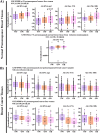
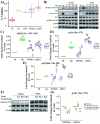
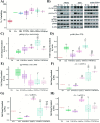
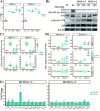
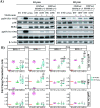

References
-
- Soto T and Lagos E. Obesidad y cáncer: un enfoque epidemiológico. Revista Médica de Costa Rica y Centroamérica (2009) LXVI(587), 27–32.
-
- GLOBOCAN (2018) https://gco.iarc.fr/
-
- Bowers L, Cavazos D, Maximo I, Brenner A, Hursting S, deGrafferenried L. Obesity enhances nongenomic estrogen receptor crosstalk with the PI3K/Akt and MAPK pathways to promote in vitro measures of breast cancer progression. Breast Cancer Research (2013) 15:R59. doi: 10.1186/bcr3453 - DOI - PMC - PubMed
Publication types
MeSH terms
Substances
LinkOut - more resources
Full Text Sources
Medical
Molecular Biology Databases

